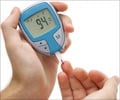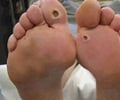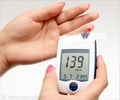A new study indicates that large amounts of high fructose corn syrup used around the world can be one explanation for the rising global epidemic of type 2 diabetes and rising healthcare costs.

The article, "High Fructose Corn Syrup and Diabetes Prevalence: A Global Perspective," is published in the journal Global Public Health.
"HFCS appears to pose a serious public health problem on a global scale," said principal study author Michael I. Goran, professor of preventive medicine, director of the Childhood Obesity Research Center and co-director of the Diabetes and Obesity Research Institute at the Keck School of Medicine at USC. "The study adds to a growing body of scientific literature that indicates HFCS consumption may result in negative health consequences distinct from and more deleterious than natural sugar."
The paper reports that out of 42 countries studied, the United States has the highest per capita consumption of HFCS at a rate of 25 kilograms, or 55 pounds, per year. The second highest is Hungary, with an annual rate of 16 kilograms, or 46 pounds, per capita. Canada, Slovakia, Bulgaria, Belgium, Argentina, Korea, Japan and Mexico are also relatively high HFCS consumers. Germany, Poland, Greece, Portugal, Egypt, Finland and Serbia are among the lowest HFCS consumers. Countries with per capita consumption of less than 0.5 kilogram per year include Australia, China, Denmark, France, India, Ireland, Italy, Sweden, the United Kingdom, and Uruguay.
Countries with higher use of HFCS had an average prevalence of type 2 diabetes of 8 percent compared to 6.7 percent in countries not using HFCS.
"This research suggests that HFCS can increase the risk of type 2 diabetes, which is one of the most common causes of death in the world today," said study co-author Professor Stanley Ulijaszek, director of the Institute of Social and Cultural Anthropology at the University of Oxford.
Advertisement
In a previous related study, the authors found that the fructose content in some U.S.-produced soft drinks, especially the most popular, was about 20 percent higher than expected, suggesting that some manufacturers might be using HFCS with more fructose than previously estimated. Such differences could "potentially be driving up fructose consumption in countries that use HFCS," the researchers said. The study notes the difficulty in determining the actual amount of fructose in foods and beverages made with HFCS because of "a lack of industry disclosure on food labels."
Advertisement
"Most populations have an almost insatiable appetite for sweet foods, but regrettably our metabolism has not evolved sufficiently to be able to process the fructose from high fructose corn syrup in the quantities that some people are consuming it," said Ulijaszek. "Although this syrup can be found in many of our processed foods and drinks, this varies enormously from country to country."
The U.S. is the single largest consumer of high fructose corn syrup. By the late 1990s HFCS made up 40 percent of all caloric sweeteners and was the predominant sweetener in soft drinks sold in the U.S. However, since 2008, exports of HFCS from the U.S. to Mexico increased "exponentially" after trade restrictions were removed, the researchers said. They call for updated public health strategies requiring better labeling of fructose and HFCS content in processed foods.
To explain the varying degrees of HFCS consumption in the European Union, the researchers note that trade and agricultural policies set quotas for HFCS production, and while some countries, such as Sweden and the U.K., do not take their assigned quotas, other countries, such as Hungary and Slovakia, are able to purchase extra quotas from countries that do not accept them. The findings of the paper thus have important implications for global trade policies that may affect public health.
"If HFCS is a risk factor for diabetes—one of the world's most serious chronic diseases—then we need to rewrite national dietary guidelines and review agriculture trade polices," said Tim Lobstein, director of policy for the International Association for the Study of Obesity. "HFCS will join trans fats and salt as ingredients to avoid, and foods should carry warning labels."
Source-Eurekalert















